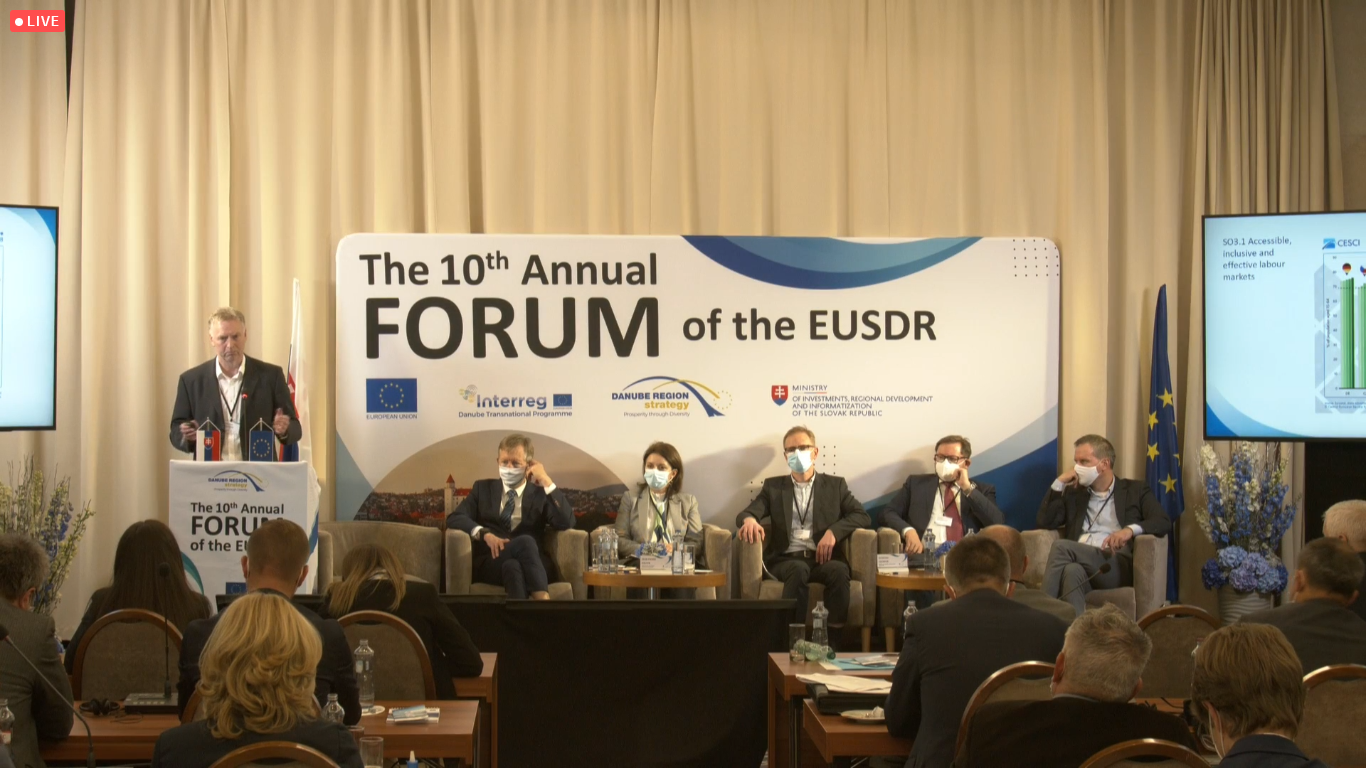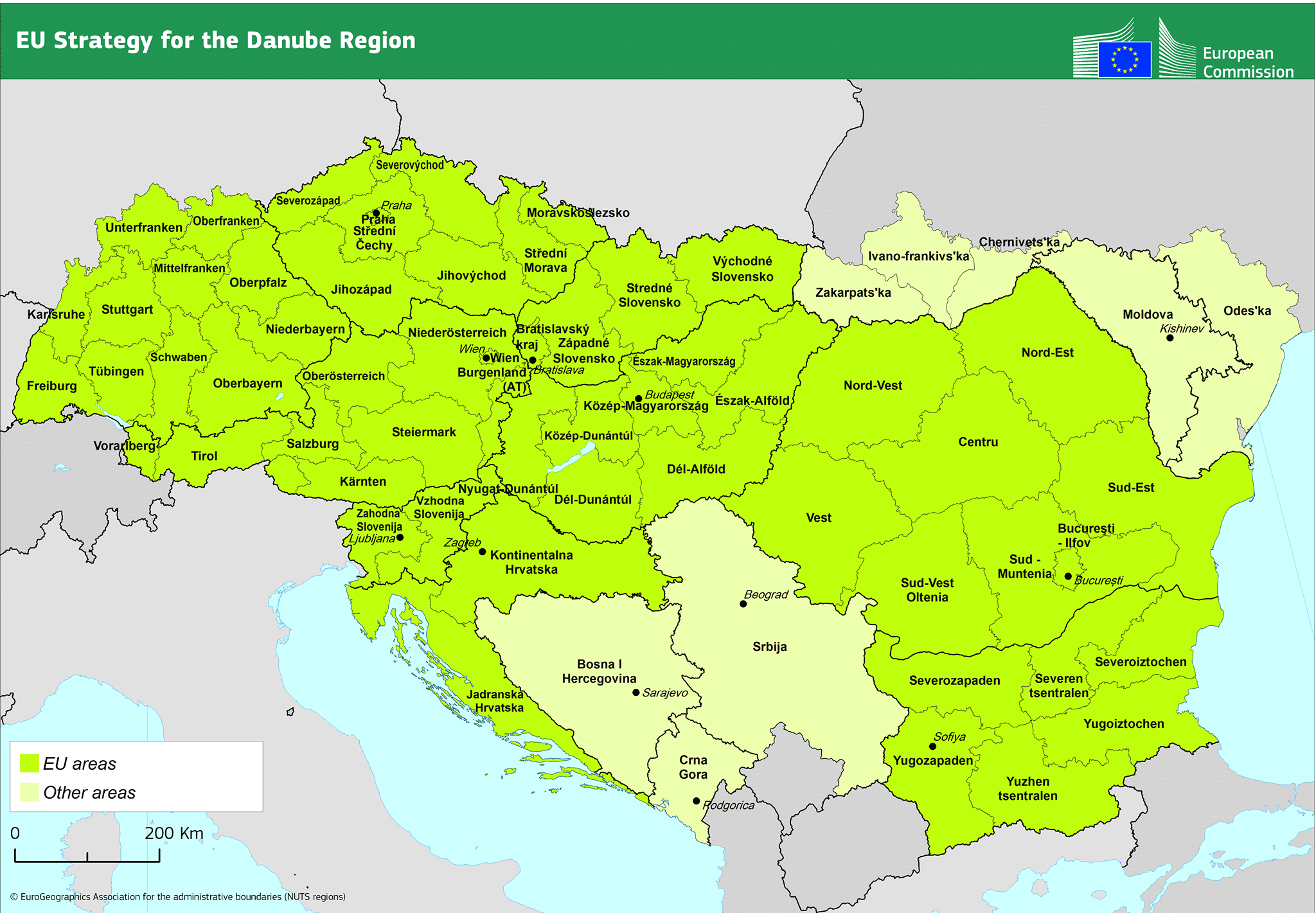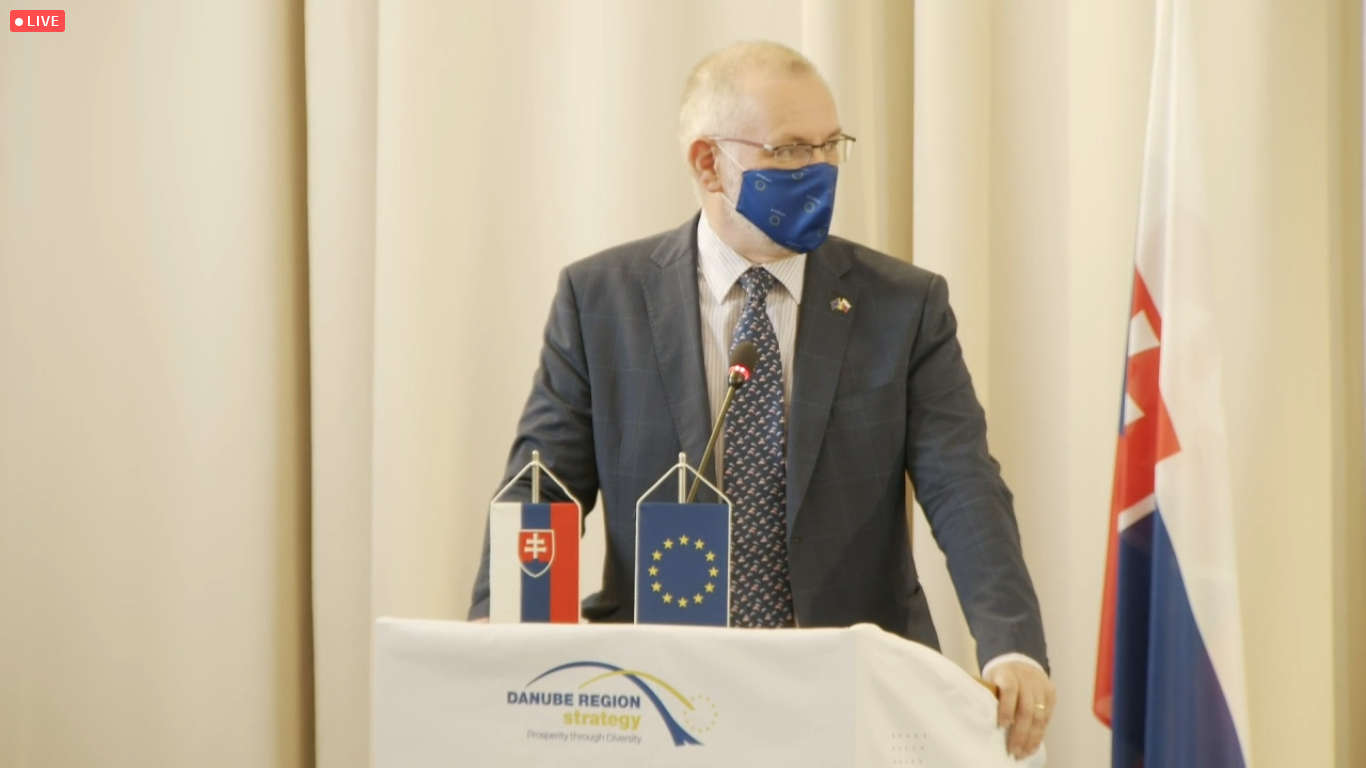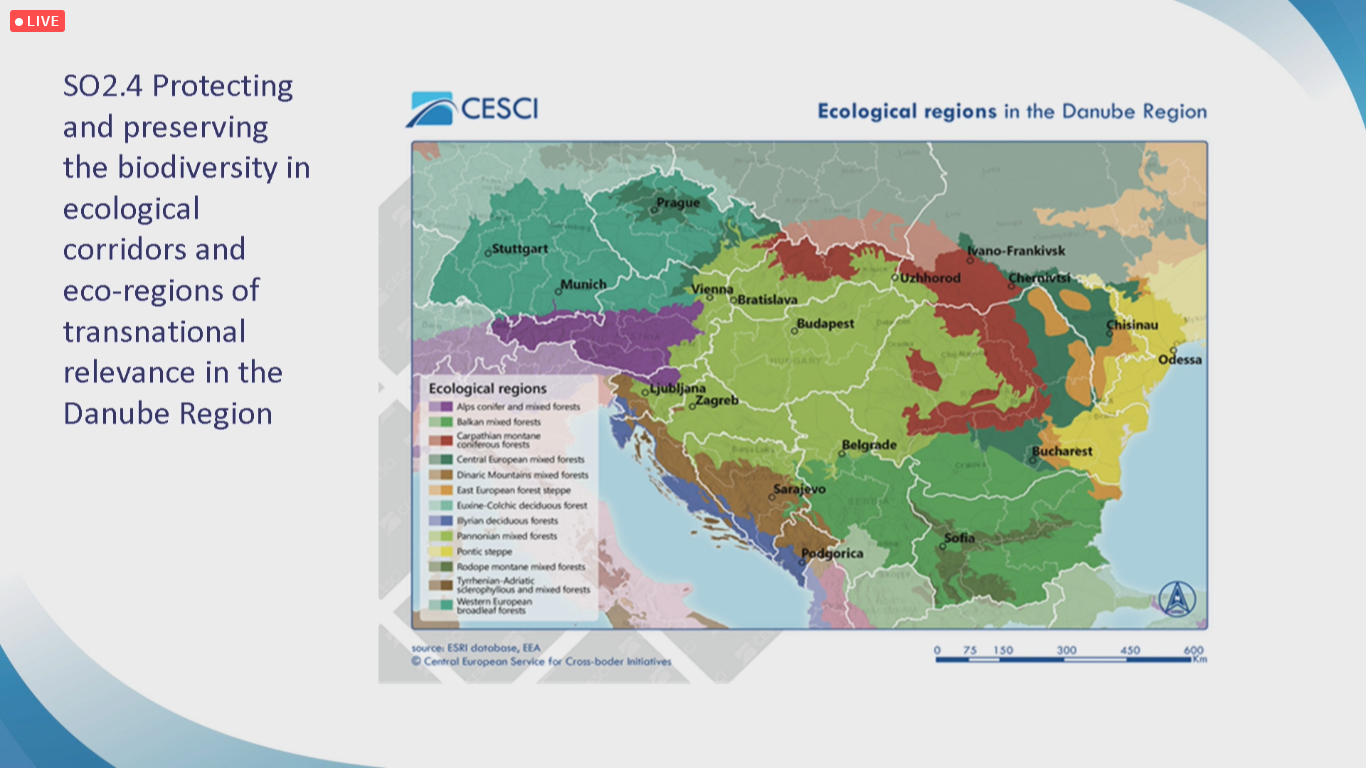SaveGREEN - Danube Region looks to a sustainable future - highlights of the 10 th EUSDR Forum
23-11-2021
‘Youth and Digitalisation’ were the core topics of the 10th Annual Forum of EUSDR.
November 2021 marks the first occasion in which a non-EU member state, Ukraine, assumes the rotating presidency of the EU Strategy for the Danube Region (EUSDR). This encouraging development demonstrates both a strong commitment from all EUSDR participants and a closer relationship between Ukraine and its neighbouring EU countries.
“This is of great significance,” Croatian State Secretary for Europe Andreja Metelko-Zgombić remarked.

10th Annual Forum of the EUSDR online streaming, picture taken during the forum by Judith Kreutzer, CEEweb
The European Commission (EC), together with Danube Region countries and stakeholders, developed the EUSDR in 2010. The European Council granted its endorsement of the macro-strategy in 2011.

EUSDR member countries: Austria, Bosnia and Herzegovina, Bulgaria, Croatia, Czech Republic, Germany, Hungary, Moldova, Montenegro, Romania, Serbia, Slovakia, Slovenia, Ukraine. Source: danube-region.eu
The overall aims of the EUSDR are to strengthen cooperation in the Danube region, to create synergies and coordination between existing policies, and to facilitate the development of effective joint initiatives. Targeting 12 priority areas, the strategy focuses not only on environmental issues, but also on economic competitiveness and overall development.
- PA 1A: Waterways Mobility
- PA 1B: Rail-Road-Air Mobility
- PA 2: Sustainable Energy
- PA 3: Culture & Tourism
- PA 4: Water Quality
- PA 5: Environmental Risks
- PA 6: Biodiversity, Landscapes and Air & Soil Quality
- PA 7: Knowledge Society
- PA 8: Competitiveness of Enterprises
- PA 9: People & Skills
- PA 10: Institutional Capacity & Cooperation
- PA 11: Security
The 10th Annual Forum, held in Bratislava at the end of October 2021, brought Slovakia’s EUSDR presidency to a close. In keeping with the event motto – “Towards a Green and Digital Danube Region” – the conference was conducted in a hybrid format, with speakers in attendance at Bratislava, plus live online streaming from two stages. With ‘Youth and Digitalisation’ as a central topic, the EUSDR strategy charts a course for a well-developed and sustainable future.
“Youth in the Danube Region account for almost a one-third higher share of the population than in the rest of Europe[JN1] , and should stand united,” Ladislav Miko, Head of Representation in the Slovak Republic, European Commission, told Forum participants. “Youth will have an important role to play in meeting shared challenges.”
 Ladislav Miko, Head of Representation in Slovak Republic, European Commission speaking at the 10th Annual Forum, picture taken during the forum by Judith Kreutzer, CEEweb
Ladislav Miko, Head of Representation in Slovak Republic, European Commission speaking at the 10th Annual Forum, picture taken during the forum by Judith Kreutzer, CEEweb
SaveGREEN in the EUSDR context
The goals of the SaveGreen project are broadly in line with Miko’s assessment. In addition to enhanced collaboration within the Danube Region, there is also a need for closer contact with neighbouring macro-regional institutions.
Already with several great initiatives in place, SaveGreen hopes to see more action resulting from new objectives within the 2021-2027 funding period, including: a more citizen-based approach, and finding more-effective approaches to biodiversity conservation and climate mitigation.
In Danube Transnational Programme, Priority Area 2 – “A Greener, Low Carbon Danube Region” – focuses on these points in particular. Its four central aspects are: renewable energy, climate change adaptation and disaster management, improving water and sediment quality, and preserving biodiversity along ecological corridors.
Endangered umbrella species are of particular concern, and efforts are being made to establish a more coordinated and collaborative network of nature protection, an important task of which is improving ecological connectivity between habitats and nature protection areas along relevant transboundary ecological corridors.
We also need to explore capacities for mitigation and prevention of water pollution, and to develop transnational coordination of water supply management, especially in relation to groundwater bodies.
 Presentation by Gusztav Csomor, coordinator environment topics on Climate change, water management and biodiversity in Danube Programme 2021-2027, picture taken during the forum by Judith Kreutzer, CEEweb
Presentation by Gusztav Csomor, coordinator environment topics on Climate change, water management and biodiversity in Danube Programme 2021-2027, picture taken during the forum by Judith Kreutzer, CEEweb
Opportunities and challenges
The Danube Region offers plenty of opportunities to reach new goals, but there are challenges as well.
According to Normunds Popens, Deputy Director-General of DG REGIO, the green transition goes hand-in-hand with the digital transition. The Covid crisis has accelerated several developments, and not only in the digital sector. The Danube Region has simultaneously some of the best-performing and worst-performing aspects of digitalisation in Europe, and investment in research and innovation is a key need.
“No territory and no citizen should be left behind,” said Popens. “When it comes to the Green Deal and problems like climate change, we need to make sure that different regions and governments join forces, and the Danube Strategy is a meaningful step forward in this regard.”
There is huge potential for the young generation to have a great impact on the future of the macro-region, according to Stephen Halligan, Coordinator of Energy and Transport Topics, but current demographics remain a problem. The westward migration, and disproportionally high levels of early school leavers in disadvantaged groups in the are important challenges to overcome.
Find out more about how SaveGREEN is connected to the event in the upcoming article!
Subscribe to our newsletter here or follow our social media channels on Facebook and Twitter to stay updated to gain project insights! Save nature: SaveGREEN!
Author:
Judih Kreutzer, CEEweb
